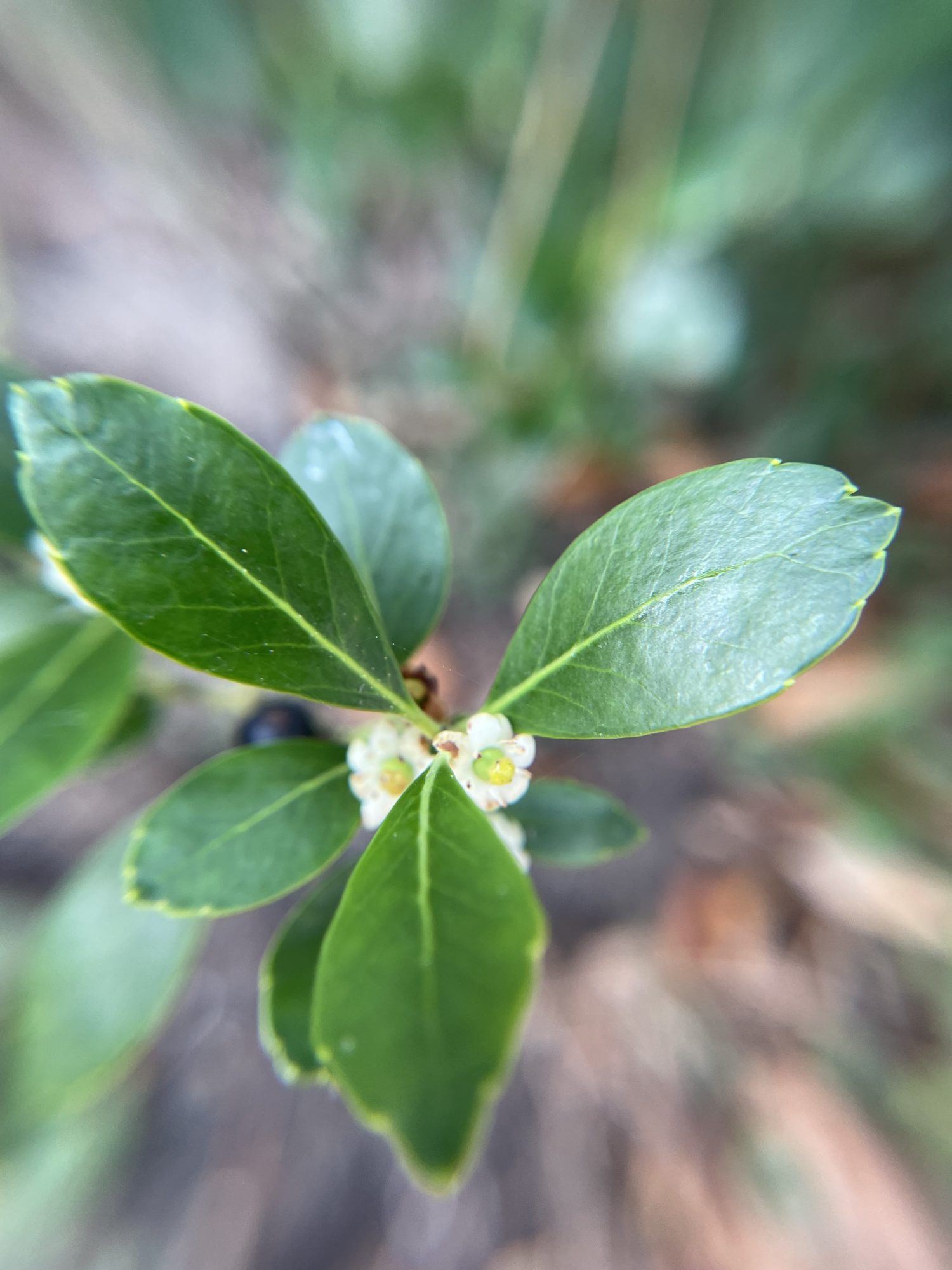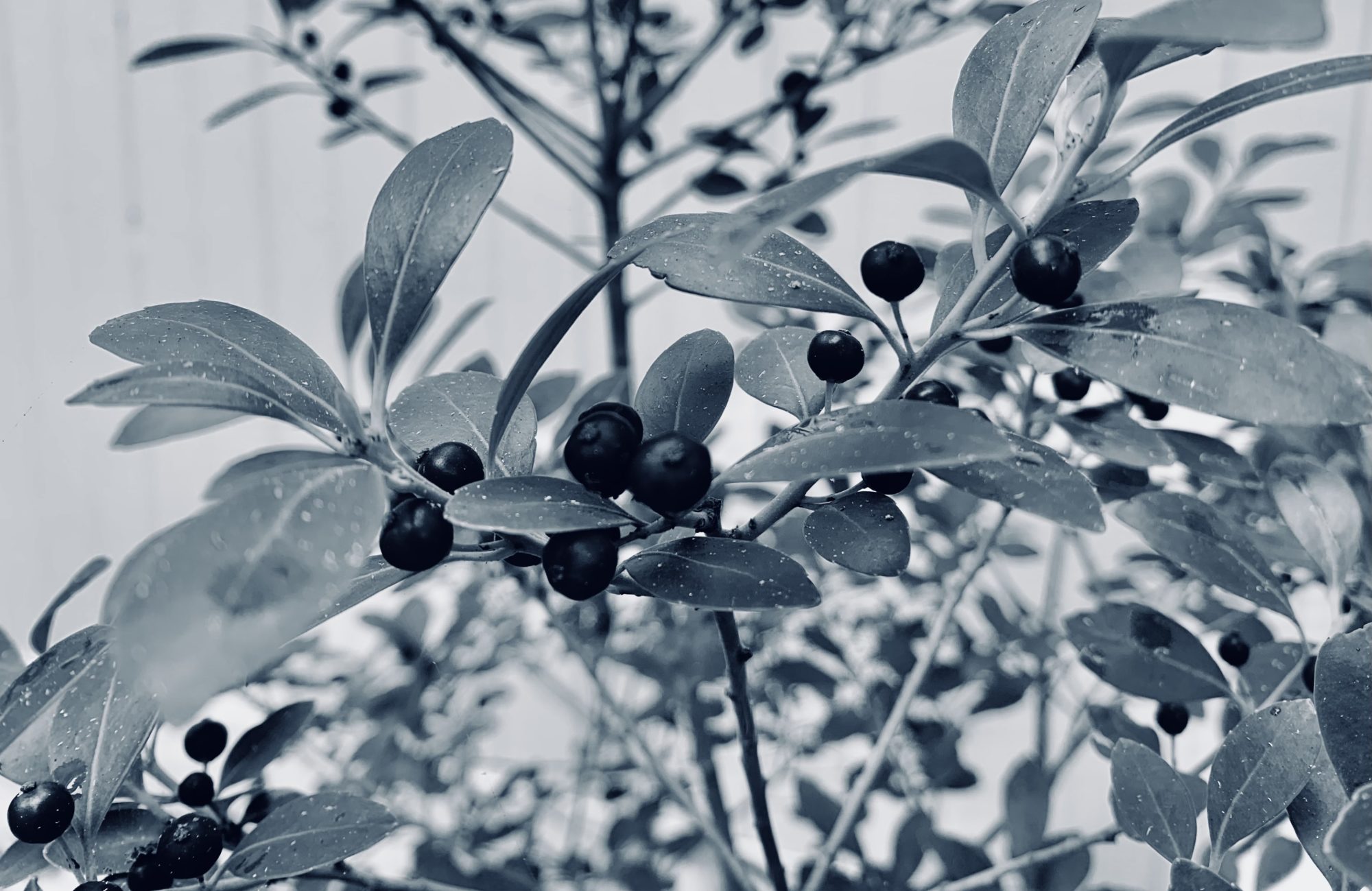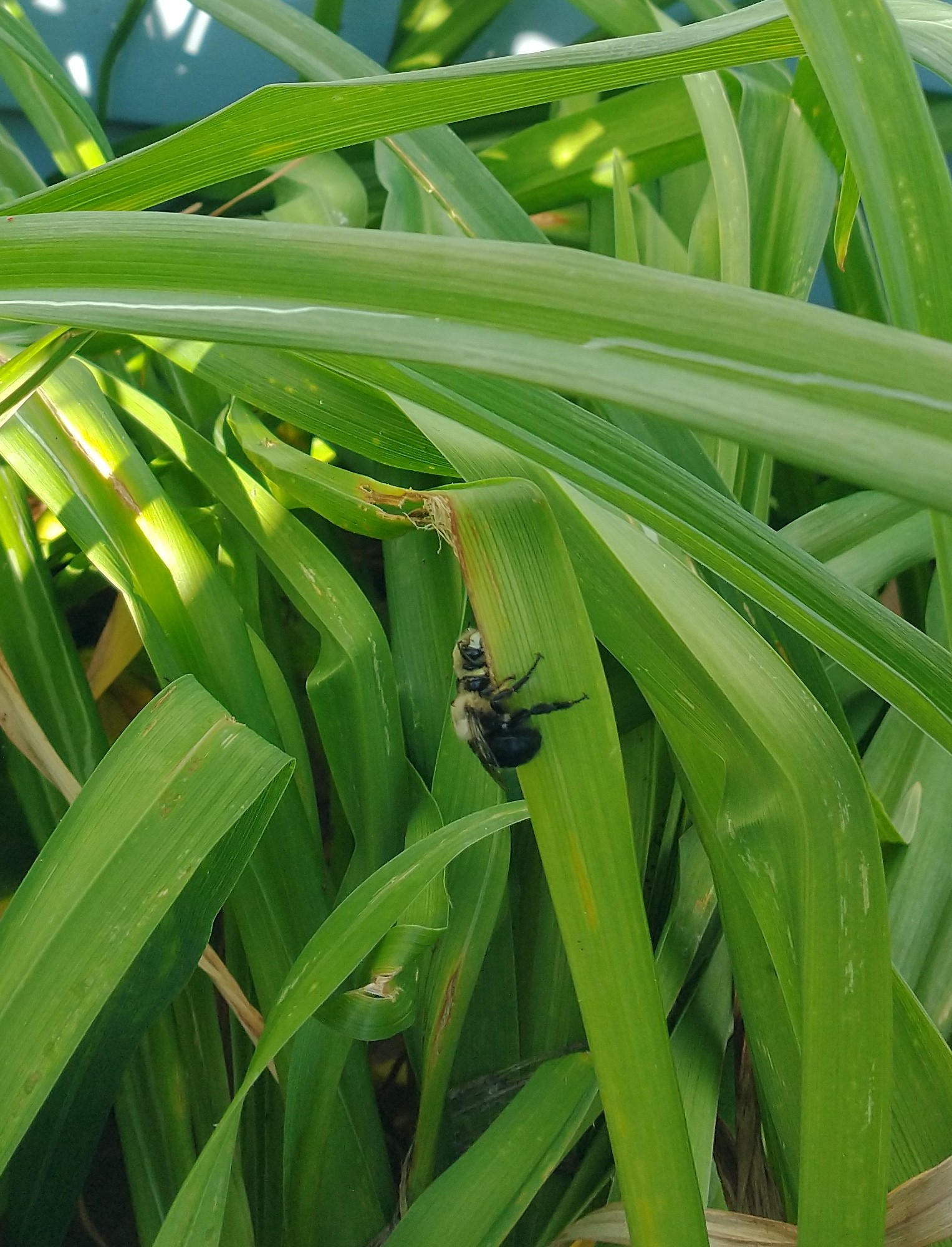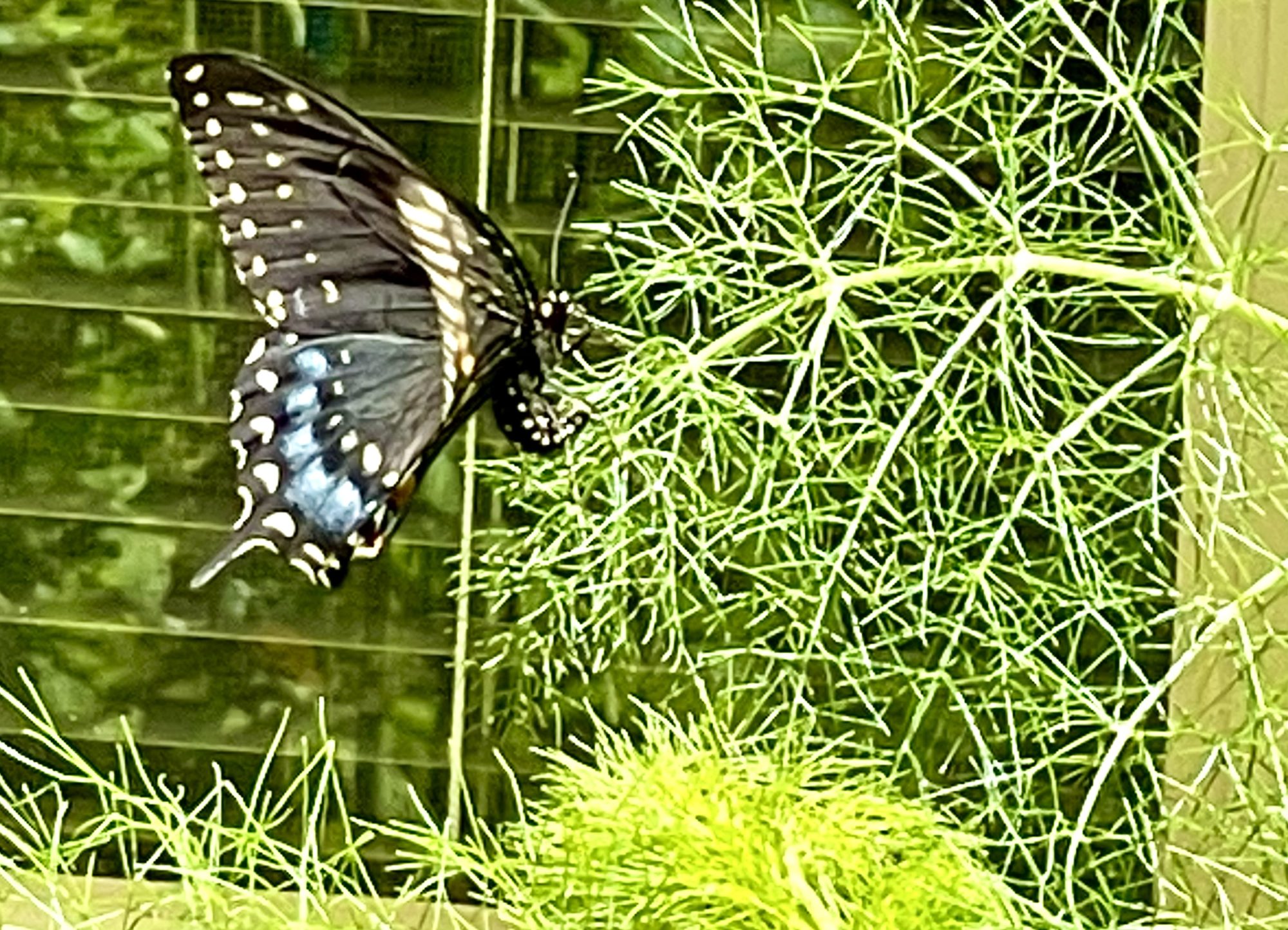
by Mary Reid Barrow
This tiny bloom has a big bee following!
The little inkberry holly in my yard was abloom in the heat last week with twin white flowers, no bigger than half my little fingernail.
As small as they were, the aroma of these flowers must have been powerful. Insects of all sizes were flying around and crawling all over that little bush—everything from big wasps and bees to tiny ants.
The hungry insects were darting around so fast I couldn’t get a photo. I imagine each little flower yielded only a touch of nectar, so the bugs had to keep moving to fill up.
You can see the beginnings of a little inkberry wherever the flowers have lost their petals. The berries are small too, about the same size as the flowers from whence they came, only the berries are round.

And in fall, the, the dark purple-black berries will be a treat for the birds. Though to get a full tummy, the birds probably will have to gobble up the berries at the same rate of speed that insects sip on the nectar in spring.
Inkberry holly (Ilex glabra) is an evergreen native holly that grows no more than 3 or 4 feet tall. With darkish green leaves that are reminiscent of boxwood leaves, Inkberry holly might, in fact, make a great native substitute for boxwood.
By the way, inkberry holly got its name from the ink confederate soldiers made from the berries and used to write letters home.
Carpenter beehavior?
A number of bees were photographed gnawing away on tough daily lily leaves by Helen Kuhn’s LRNow’s assistant director.
Helen wasn’t sure what kind of bees they were, nor did she know what in the world attracted them to fibrous old day lily leaves. And neither did I.
A check with photographer and insect aficionado Robert Brown solved half the question. The bees are male carpenter bees he said. “The white faces are positive ID.”

But what were the bees doing?
You often see male carpenter bees hovering around an area where females have excavated nesting holes in soft rotting wood. Though they appear menacing, male carpenter bees don’t have stingers. They just act like bullies in their territorial defense of the females. (Females do have stingers but they are very docile and rarely sting unless picked up in your hand.)
Both dine on sweet flower nectar.
So, what were Helen’s bees doing? Neither male nor female gather nesting materials, so the guys weren’t out there gathering day lily fibers to make soft beds.
Brown wonders if they weren’t just seeking sweet juices from the leaves themselves, but he doesn’t know. Has anybody out there seen this behavior or know what the carpenter boys were up to?
Or, should we just say boy bees will be boy bees?
BEE on the lookout for caterpillars!

Just recently I watched a black swallowtail butterfly laying eggs on my fennel plant. She flitted around the plant as though seeking the very best spot, to land. Then she would drop in, pause, lay her eggs and lift off to search for the next perfect landing spot. Round and round the fennel she went.
Now’s the time I know to be careful around all my plants. I’ll never know when those green leaves may contain more life than just their greenery